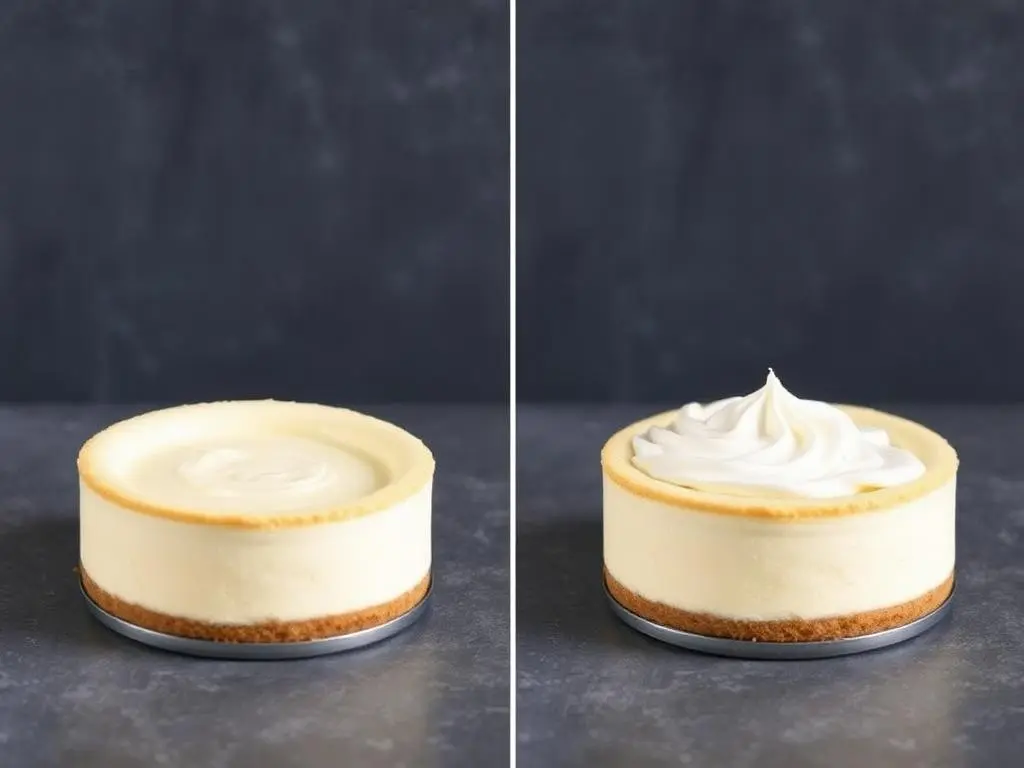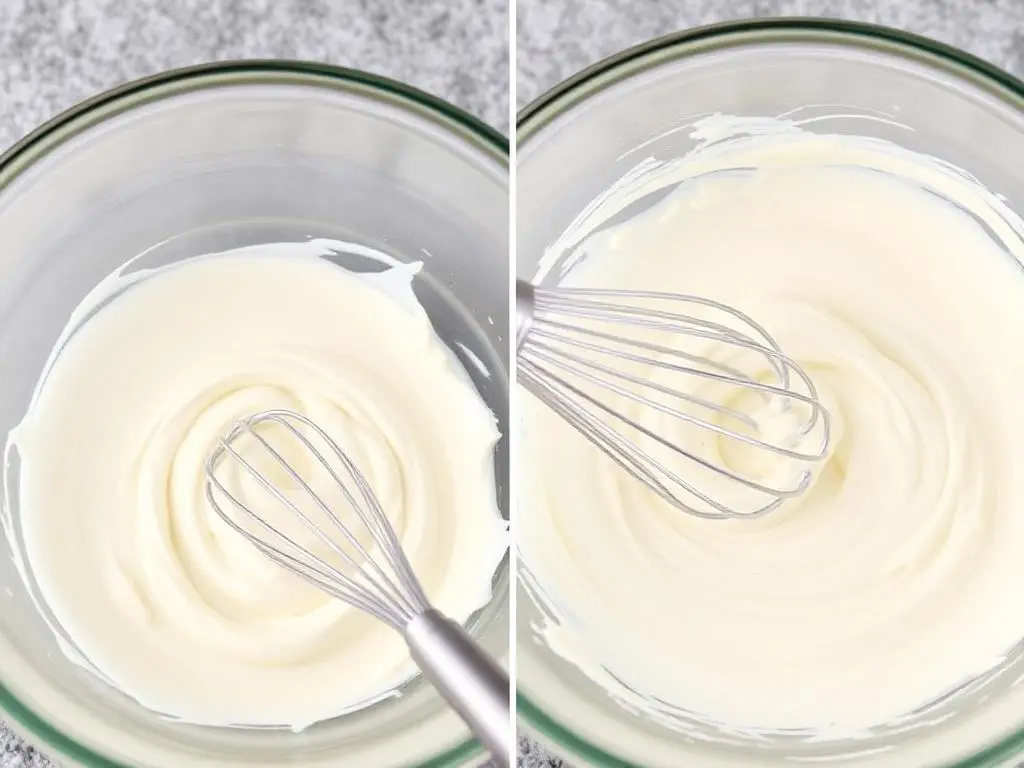When it comes to creating delicious desserts, a rich and creamy filling can make all the difference. If you’ve ever found yourself wondering, “How can I thicken my cream cheese filling?”, you’re not alone! Many bakers and home cooks face this challenge, especially when aiming for that perfect texture in cheesecakes, pastries, or frostings. In this article, we’ll explore various methods to achieve a thicker cream cheese filling, ensuring your desserts are not only tasty but also visually appealing. From understanding the properties of cream cheese to practical tips and tricks, we’ve got you covered!
Introduction to Cream Cheese Filling
Overview of Cream Cheese Filling
Cream cheese filling is a versatile ingredient that can elevate a variety of desserts. Whether you’re making a classic cheesecake, a delightful pastry, or a luscious frosting, the right consistency is crucial. A thick cream cheese filling not only enhances the flavor but also provides a satisfying mouthfeel. However, achieving that ideal thickness can sometimes be tricky.
Importance of Thickness in Cream Cheese Filling
The thickness of your cream cheese filling plays a significant role in the overall success of your dessert. A filling that’s too runny can lead to a soggy crust or a messy presentation, while a perfectly thick filling holds its shape and adds to the visual appeal. Plus, a thicker filling often means a richer flavor, making every bite more enjoyable. So, if you’re aiming for that wow factor, understanding how to thicken your cream cheese filling is essential.
Purpose of the Article
In this article, we’ll delve into the various reasons why your cream cheese filling might be too thin and explore effective methods to thicken it. We’ll cover everything from using additional ingredients to adjusting your preparation techniques. By the end, you’ll have a comprehensive toolkit to ensure your cream cheese filling is always just right. So, let’s get started on this creamy adventure!
Understanding Cream Cheese
What is Cream Cheese?
Cream cheese is a soft, spreadable cheese made from a mixture of cream and milk. It has a mild flavor and a smooth texture, making it a popular choice for both sweet and savory dishes. Typically, cream cheese contains about 33% fat, which contributes to its creamy consistency. This delightful ingredient is often used in recipes for cheesecakes, frostings, and dips, but its versatility extends far beyond that.
Common Uses of Cream Cheese in Recipes
You’ll find cream cheese in a variety of recipes, from classic New York-style cheesecakes to rich frostings for cakes and cupcakes. It’s also a key ingredient in savory dishes like stuffed mushrooms and creamy pasta sauces. The ability to blend well with other flavors makes cream cheese a favorite among bakers and cooks alike. Whether you’re whipping up a sweet dessert or a savory appetizer, cream cheese can add that extra touch of creaminess.
Factors Affecting the Consistency of Cream Cheese
Several factors can influence the consistency of cream cheese, particularly when it comes to making a filling. The temperature of the cream cheese is crucial; if it’s too cold, it can be difficult to mix, resulting in a lumpy texture. On the other hand, if it’s too warm, it may become too runny. Additionally, the type of cream cheese you use can impact the thickness. Full-fat cream cheese typically yields a thicker filling compared to low-fat or whipped varieties.
Reasons for Thin Cream Cheese Filling
Common Causes of Thin Filling
If you’ve ever ended up with a runny cream cheese filling, you’re not alone. There are several common culprits that can lead to this frustrating situation. One of the primary reasons is the use of too much liquid in your recipe. Ingredients like milk, cream, or even fruit purees can add moisture, which may result in a filling that lacks the desired thickness. Additionally, if you’re using a low-fat cream cheese, it may not provide the same structure as its full-fat counterpart, leading to a thinner consistency.
Impact of Temperature on Consistency
Temperature plays a significant role in the texture of your cream cheese filling. If your cream cheese is too warm, it can become overly soft and lose its ability to hold shape. Conversely, if it’s too cold, it can be difficult to blend smoothly, resulting in lumps. Ideally, you want your cream cheese to be at room temperature before mixing. This allows for better incorporation with other ingredients, leading to a creamier and thicker filling.
Role of Ingredients in Thickness
The ingredients you choose can also affect the thickness of your cream cheese filling. For instance, adding too much sugar can create a syrupy texture, while not incorporating enough stabilizers can lead to a filling that doesn’t hold up well. Additionally, certain flavorings or extracts can introduce extra moisture, which may compromise the thickness. Understanding how each ingredient interacts with cream cheese is key to achieving that perfect consistency.
Methods to Thicken Cream Cheese Filling
Using Additional Ingredients
When it comes to thickening your cream cheese filling, incorporating additional ingredients can be a game-changer. Here are some effective options to consider:
Powdered Sugar
One of the simplest ways to thicken your cream cheese filling is by adding powdered sugar. Not only does it sweeten the filling, but it also helps to absorb excess moisture. Start by adding a small amount, mixing well, and then gradually increase until you reach your desired thickness. Just be cautious not to overdo it, as too much sugar can make your filling overly sweet.
Cornstarch
Cornstarch is another excellent thickening agent. To use it, mix a tablespoon of cornstarch with a small amount of cold water to create a slurry. Then, gently fold this mixture into your cream cheese filling. As it heats up (if you’re using it in a baked recipe), the cornstarch will activate and help thicken the filling. This method is particularly useful for cheesecakes or baked goods.
Gelatin
If you’re looking for a more stable thickening option, consider using gelatin. To do this, dissolve gelatin in warm water according to the package instructions, then allow it to cool slightly before incorporating it into your cream cheese filling. This method is especially effective for no-bake cheesecakes, as it helps the filling set firmly without becoming too dense.
Cream Cheese Powder
For a quick and easy solution, cream cheese powder can be a fantastic addition. This ingredient is concentrated and can help thicken your filling without altering the flavor significantly. Simply mix in a tablespoon or two, and you’ll notice a thicker consistency almost immediately.
Heavy Cream
Adding heavy cream can also help thicken your cream cheese filling while enhancing its richness. Whip the heavy cream until soft peaks form, then gently fold it into your cream cheese mixture. This not only thickens the filling but also adds a light, airy texture that can elevate your dessert.
Sour Cream
Sour cream is another ingredient that can help thicken your cream cheese filling. It adds a tangy flavor that complements the cream cheese beautifully. Simply mix in a few tablespoons of sour cream until you achieve the desired thickness. This method works well in both sweet and savory recipes.
Adjusting Preparation Techniques
Sometimes, the way you prepare your filling can make all the difference. Here are some techniques to consider:
Chilling the Filling
If your cream cheese filling is too thin, try chilling it in the refrigerator for about 30 minutes. This allows the filling to firm up, making it easier to spread or pipe. Just be sure to cover it to prevent it from drying out.
Whipping Techniques
The way you whip your cream cheese can also impact its thickness. When mixing, start at a low speed to combine the ingredients, then gradually increase to medium speed. This helps incorporate air into the filling, which can create a thicker texture. Just be careful not to overmix, as this can lead to a runny consistency.
Incorporating Air
Incorporating air into your cream cheese filling can help achieve a thicker texture. Use a whisk or an electric mixer to beat the filling until it’s light and fluffy. This not only thickens the filling but also enhances its overall mouthfeel, making it more enjoyable.
Alternative Thickening Agents
If you’re looking for something a bit different, consider these alternative thickening agents:
Instant Pudding Mix
Instant pudding mix can be a surprising yet effective thickener for cream cheese filling. Simply add a few tablespoons of the mix to your filling and blend well. This not only thickens the filling but also adds flavor, making it a great option for dessert recipes.
Mashed Potatoes
While it may sound unconventional, mashed potatoes can be used to thicken cream cheese filling in savory dishes. Just a small amount can add body without altering the flavor significantly. This method is particularly useful in dips or spreads.
Nut Butters
Nut butters, such as almond or peanut butter, can also help thicken your cream cheese filling while adding a unique flavor. Mix in a couple of tablespoons until you reach the desired consistency. This works especially well in dessert recipes where a nutty flavor is welcome.
Tips for Perfecting Cream Cheese Filling

Choosing the Right Cream Cheese
The first step to achieving a thick and creamy filling is selecting the right type of cream cheese. Opt for full-fat cream cheese, as it provides a richer texture and better stability compared to low-fat or whipped varieties. Full-fat cream cheese has a higher fat content, which helps create a thicker filling that holds its shape beautifully. If you can, choose a block of cream cheese rather than the spreadable kind, as the latter often contains added ingredients that can affect consistency.
Balancing Flavors and Textures
When thickening your cream cheese filling, it’s essential to maintain a balance of flavors and textures. If you’re adding sweeteners or thickeners, taste as you go to ensure the filling doesn’t become overly sweet or dense. For instance, if you’re using powdered sugar to thicken, consider how it will affect the overall flavor profile. You might want to add a pinch of salt or a splash of vanilla extract to enhance the taste and create a more harmonious filling.
Experimenting with Ratios
Don’t be afraid to experiment with ingredient ratios to find the perfect consistency for your cream cheese filling. Start with a basic recipe and adjust the amounts of cream cheese, thickeners, and other ingredients until you achieve the desired thickness. Keep notes on what works and what doesn’t, so you can replicate your success in future recipes. Remember, baking is as much about creativity as it is about precision, so have fun with it!
With these tips in mind, you’ll be well on your way to creating a thick and delicious cream cheese filling. However, even the most experienced bakers can make mistakes. In the next part, we’ll discuss some common pitfalls to avoid when working with cream cheese filling.
When it comes to perfecting cream cheese filling, achieving the right thickness can elevate your desserts to the next level. Whether you’re making a cheesecake or stuffed pastries, mastering the consistency is key. If you’re diving into the world of cream cheese-based creations, don’t miss our guide on how to make cream cheese filling thicker or learn about the differences between buttercream and cream cheese filling. For something fun and unique, try a recipe like the viral crookie that combines cookie and croissant magic perfect with a thick and luscious cream cheese filling!
Common Mistakes to Avoid
1. Overmixing the Filling
One of the most common mistakes when making cream cheese filling is overmixing. While it’s important to blend your ingredients well, overmixing can lead to a runny consistency. This happens because excessive mixing incorporates too much air, causing the cream cheese to break down. To avoid this, mix just until the ingredients are combined and smooth. If you’re using a mixer, start on a low speed and gradually increase it, but stop as soon as you achieve a creamy texture.
2. Using Low-Fat Cream Cheese
While low-fat cream cheese may seem like a healthier option, it often lacks the richness and stability of full-fat varieties. This can result in a thinner filling that doesn’t hold up well in desserts. If you’re aiming for a thick and creamy filling, it’s best to stick with full-fat cream cheese. If you’re looking to reduce calories, consider using a smaller amount of full-fat cream cheese combined with a thicker ingredient, like Greek yogurt, to maintain the desired texture.
3. Ignoring Temperature Control
Temperature control is crucial when working with cream cheese filling. If your cream cheese is too cold, it can be difficult to mix, leading to lumps and an uneven texture. Conversely, if it’s too warm, it can become overly soft and runny. To achieve the best results, allow your cream cheese to sit at room temperature for about 30 minutes before using it. This will make it easier to blend smoothly with other ingredients, resulting in a thicker and creamier filling.
Now that you’re aware of the common mistakes to avoid, let’s move on to the frequently asked questions about thickening cream cheese filling. In the next part, we’ll address some common queries that can help you troubleshoot any issues you might encounter.
FAQs
1. How do I fix runny cream cheese filling?
If you find yourself with a runny cream cheese filling, don’t panic! There are several ways to salvage it. First, try chilling the filling in the refrigerator for about 30 minutes. This can help it firm up. If that doesn’t work, consider adding a thickening agent like powdered sugar, cornstarch, or gelatin. Start with a small amount, mix well, and gradually add more until you reach the desired consistency.
2. Can I use low-fat cream cheese to thicken my filling?
While you can use low-fat cream cheese, it may not provide the thickness you desire. Low-fat varieties often contain added stabilizers and less fat, which can lead to a thinner filling. If you’re looking for a thicker consistency, it’s best to stick with full-fat cream cheese. If you want to reduce calories, consider mixing full-fat cream cheese with a small amount of Greek yogurt for a healthier option that still maintains thickness.
3. What can I use instead of powdered sugar?
If you don’t have powdered sugar on hand, there are several alternatives you can use to thicken your cream cheese filling. Granulated sugar can work in a pinch, but it may not dissolve as easily, so be sure to mix thoroughly. Alternatively, you can use honey or maple syrup, but keep in mind that these will add additional moisture, so you may need to adjust other ingredients accordingly.
4. How long can I store thickened cream cheese filling?
Thickened cream cheese filling can typically be stored in the refrigerator for up to 3-5 days. Be sure to keep it in an airtight container to prevent it from drying out or absorbing odors from other foods. If you need to store it for a longer period, consider freezing it. Just remember to thaw it in the refrigerator before using, and give it a good stir to restore its creamy texture.
5. Can I freeze cream cheese filling?
Yes, you can freeze cream cheese filling! However, keep in mind that the texture may change slightly upon thawing. To freeze, place the filling in an airtight container or freezer bag, removing as much air as possible. It can be stored in the freezer for up to 2-3 months. When you’re ready to use it, thaw it in the refrigerator overnight and give it a good stir to help restore its original consistency.
Conclusion
Recap of Key Points
In this article, we’ve explored the ins and outs of thickening cream cheese filling, from understanding the properties of cream cheese to identifying common pitfalls. We discussed various methods to achieve that perfect thickness, including using additional ingredients like powdered sugar, cornstarch, and gelatin. We also highlighted the importance of choosing the right cream cheese and adjusting your preparation techniques to ensure a creamy, thick filling.
Baking is as much about creativity as it is about following recipes. Don’t hesitate to experiment with different thickeners and ratios to find what works best for you. Each dessert is unique, and with a little trial and error, you’ll discover the perfect combination that suits your taste. Remember, the goal is to create a filling that not only tastes great but also has the right texture to elevate your desserts.
Whether you’re making a decadent cheesecake, a delightful frosting, or a savory dip, knowing how to thicken your cream cheese filling can make all the difference. With the tips and techniques shared in this article, you’re now equipped to tackle any cream cheese filling challenge that comes your way. So roll up your sleeves, get creative in the kitchen, and enjoy the delicious results of your efforts!

